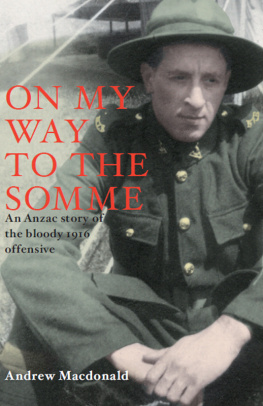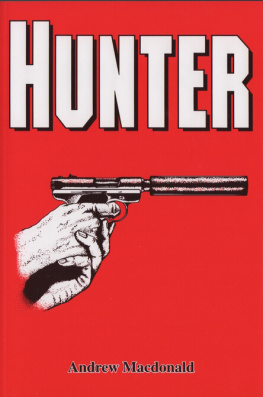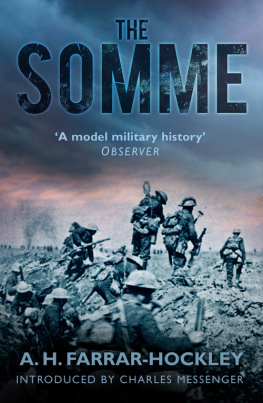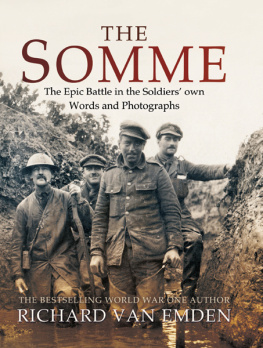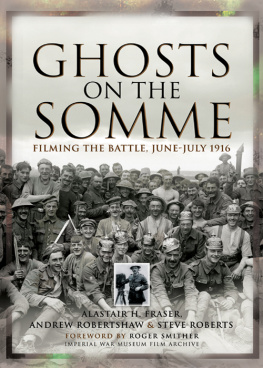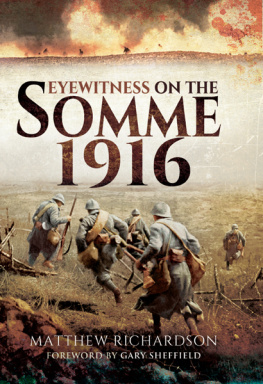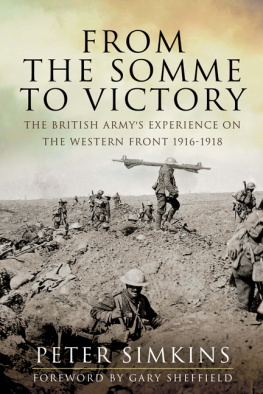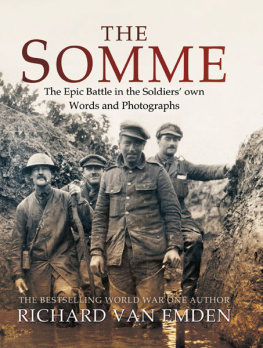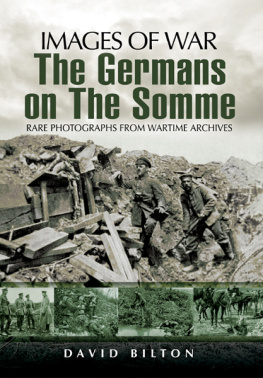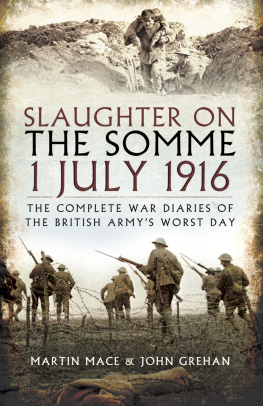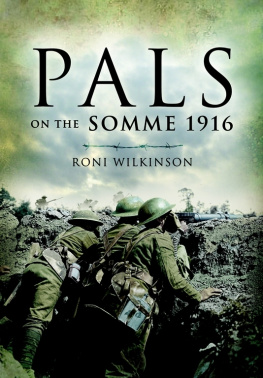and Eric Sargisson (11/820).
The trials of your youth are not forgotten.
T his is going to be a real big show, wrote Sergeant Arthur Rhind on the eve of the New Zealand Divisions attack on the Somme in September 1916. He was right, of course, but Sergeant Rhind, like so many others, probably did not realise just how big the Somme battle would be. That experience affected forever all those who took part. More than this, it also affected the development of New Zealand as a nation in ways we have only just began to understand and explore.
Here, for the first time in a single volume, is a detailed account of the New Zealand Division on the Somme in 1916. That such an account has appeared nearly ninety years after the events it describes and when none of the participants is alive is regrettable. We owe a tremendous debt to the author, Andrew Macdonald, for his painstaking efforts to bring this incredible story to life. Andrews aim has been to tell the story of the New Zealand Divisions battle on the Somme using, as much as possible, the words of the soldiers who were there. He has succeeded in this admirably and produced the most complete and compelling account of the New Zealanders on the Somme in 1916 yet written.
The battle of the Somme was a pivotal battle for the New Zealand Division. For a start it was the divisions first major attack on the Western Front and the first against the German Army. It was a chance to finally put all the hard training they had undertaken into practice. As Major General Andrew Russell was all too aware, the divisions reputation would be established by how well they fought in this first big battle on the Western Front. For the New Zealanders, the Somme battle of 1916 lasted for 23 days, one of the longest tours of duty of any division involved. During this time the division was transformed. It had entered the battle untried, unsure of the calibre of the officers and men and anxious to do well. It left the Somme battle-hardened, experienced and sure of its own quality. There was still much to learn, but those who took part in the battle knew, as Andrew Macdonald records here, that they had performed with distinction.
But what a cost for this transformation. The New Zealand Divisions casualties were horrendous: one soldier in every seven who took part was killed and four out of ten were wounded, an overall casualty rate of 53 per cent. These were only the visible casualties. As Andrew clearly shows, all of those who took part were scarred by their experiences for the rest of their lives.
One of the great strengths of this book is the way that the operational detail has been spiced with the impact of personality. Through their letters and diaries we actually get to know many of the people who took part in this battle. These include a wide range of personalities, from major generals to private soldiers. It is their recollections, so painstakingly gathered by Andrew and carefully crafted into the story, that make this battle come alive for the reader. These personal recollections also serve another crucial purpose. They show how important comradeship was in order to endure the unendurable and they also show the great qualities of the New Zealand soldier on the Western Front, especially his courage, determination and fortitude.
The battle of the Somme, then, is one of the most important battles in New Zealands military history. As veteran and writer Ormond Burton once wrote:
Somewhere between the bloody ridge of Chunuk Bair in August 1915 and the black swamp in front of Passchendaele in October 1917, New Zealand quite definitely found individuality and nationality.
The battle of the Somme in 1916 lies at the heart of this discovery. Such an important battle with it triumphs and tragedies, with its sacrifice and valour, deserves to be much better known than it is. On My Way to the Somme should be read by all New Zealanders who want to know more about the critical events of the past that have shaped us as a nation.
Glyn Harper
Palmerston North
April 2005
O n My Way to the Somme has been my constant companion for more than three years. The idea for a book about the New Zealand Divisions role in the 1916 Somme offensive in northern France came to me in a quaint caf at Longueval in 2000, but was several years in gestation. My goal: to tell the divisions story using the words of its soldiers. Of course, no historical event exists in isolation and I have endeavoured to give context at both macro and micro levels to the events of 1916. This was easier said than done, for only fragments of the divisions records have survived. For instance, it was necessary to reconstruct the movements of 1st New Zealand Infantry Brigade as much of its paperwork has been lost or destroyed. Unit histories and published memoirs were useful in so much as they expanded on, and sometimes differed from, the often bare-of-detail war diaries and operational orders held at Archives New Zealand. Where conflicts of facts occur both versions are given. To the skeleton of events created by official documents I added the soldiers words from their diaries and letters, which are quoted verbatim to retain the flavour of 1916, and their recorded interviews. In the first instance, soldiers are addressed by their rank in 1916, name given on enlistment and, where appropriate, their unit. Thereafter they are referred to by surname alone. At times the project has been frustrating and the answers to many questions elusive. A visit to the Somme battlefield in November 2004 threw several events into relief and saw many loose ends squared away. What you have here, then, is a sincere study of the New Zealand Divisions part in the 1916 offensive. Any omissions are my own.
There are many, many people who have helped me on the journey to completing On My Way to the Somme . Thanks must first go to military historians who have given up their time and offered critical advice throughout. To Glyn Harper, of Massey University, who has given of his time and knowledge over three-and-a-half years: thanks a million; your help and encouragement were key drivers in this books completion. To Ian McGibbon, at the Ministry of Culture and Heritage, and John Crawford, at New Zealand Defence Force headquarters: your suggestions for improving selected chapters of the draft manuscript helped knock off its rough edges. A word must also be put in for England-based Christopher Pugsley who, during a drizzly night in Arras, northern France, offered suggestions on the many questions I had about Major General Sir Andrew Russells command of the New Zealand Division on the Somme, 1916. Somme expert and Kings College (London) senior lecturer Gary Sheffield offered critical advice throughout.
Many organisations have played vital roles in completing this book. The staff at Archives New Zealand must have grown tired of trundling out the voluminous records of the New Zealand Expeditionary Force and New Zealand Division. The always-helpful staff at Wellingtons Alexander Turnbull Library in particular the manuscript and oral history departments provided the first-hand accounts. Dolores Ho, of the Kippenberger Library at the Army Museum Waiouru, produced rare military books and a number of very useful diaries, which materially helped in the completion of this book. Walter Guttery and Pene Reti of the Defence Forces personnel department provided the soldiers army files, which gave context to their diaries and letters. To the overdue desk at Wellington Public Library, thanks for your good humour when it came to this recalcitrant borrower. The Commonwealth War Graves Commission provided casualty details, which showed beyond doubt that New Zealand lost more men on the Somme than previously thought.

